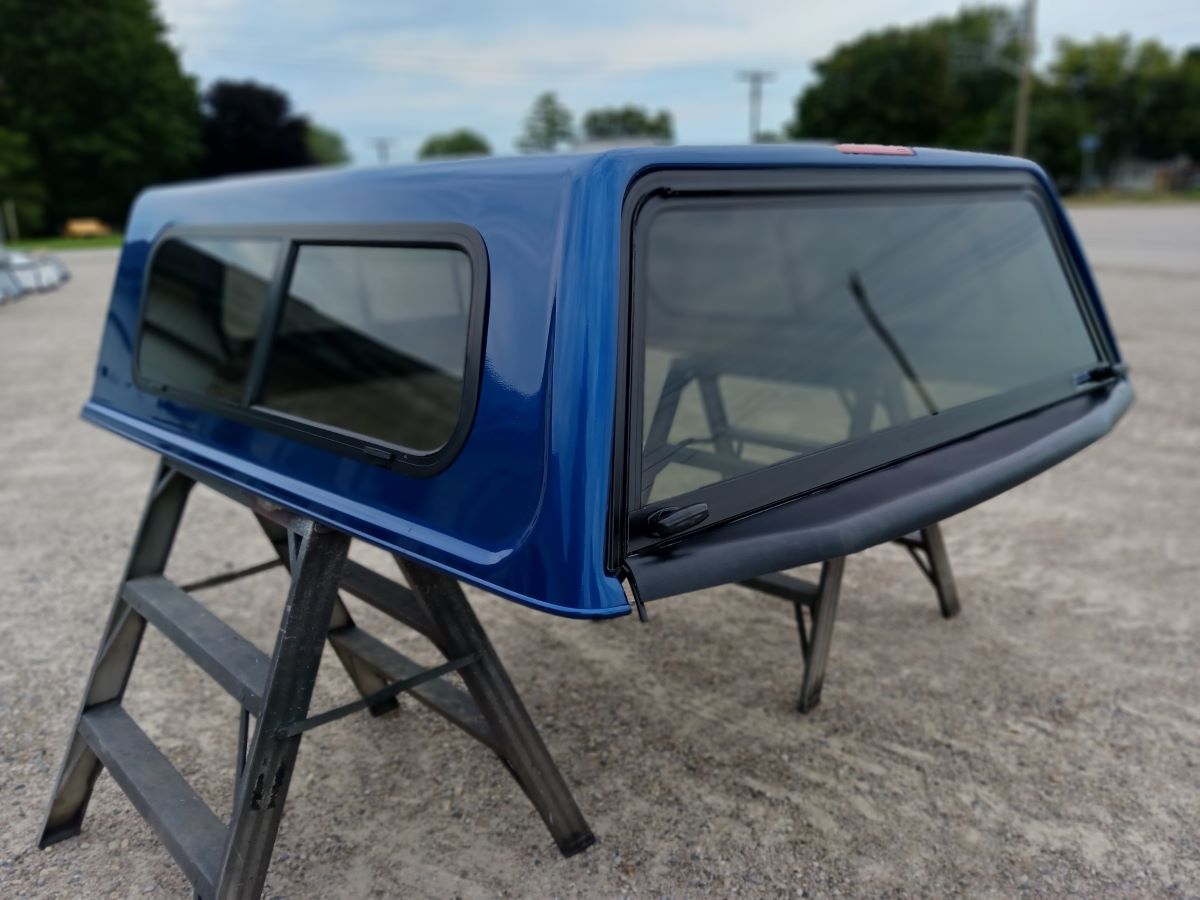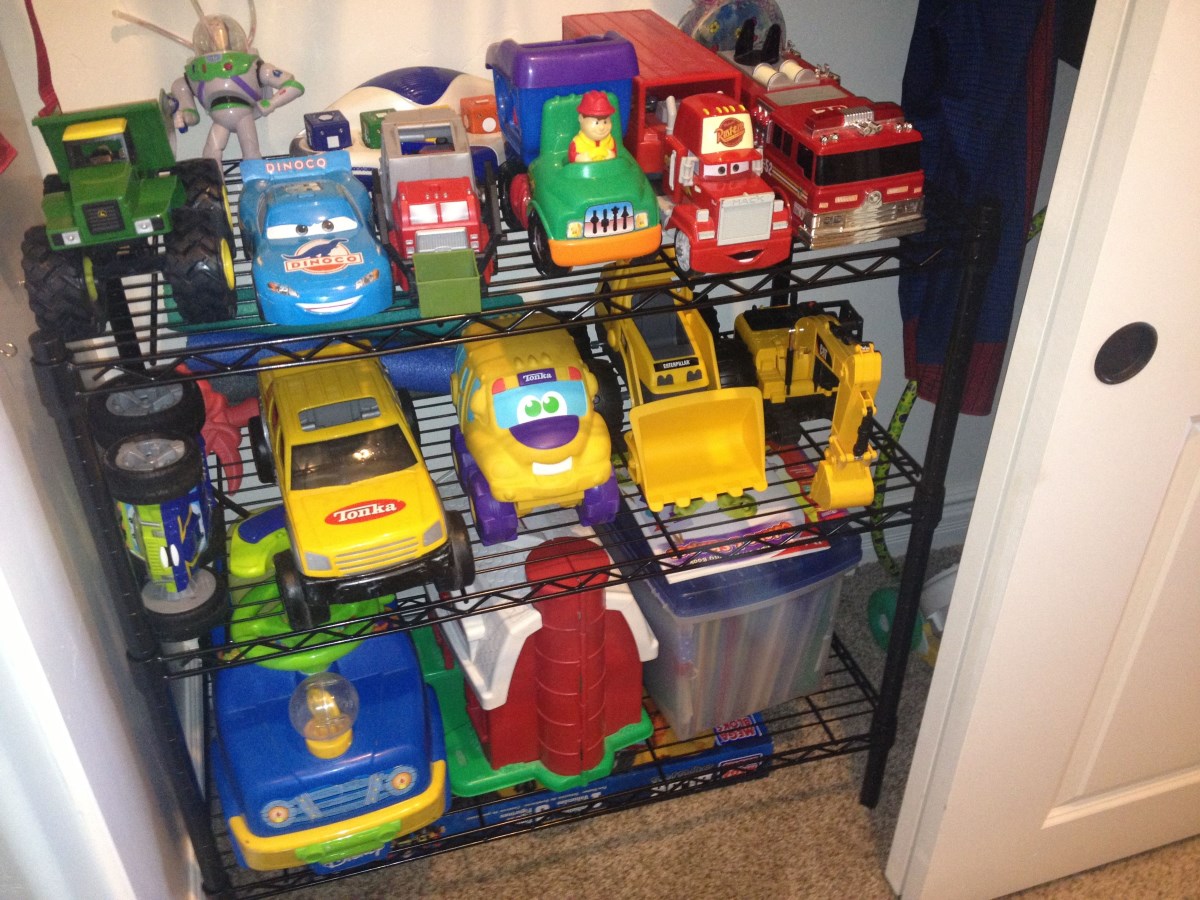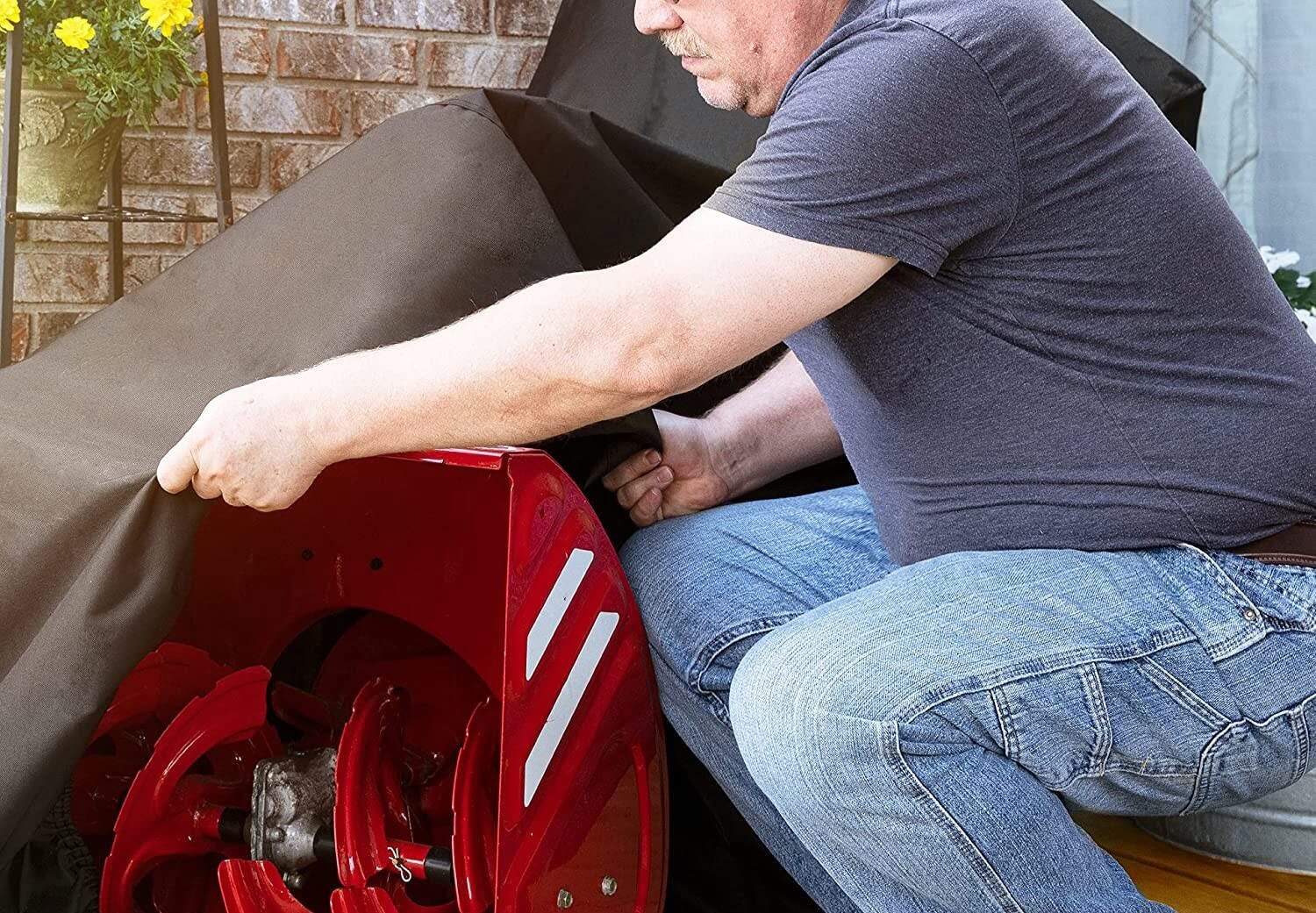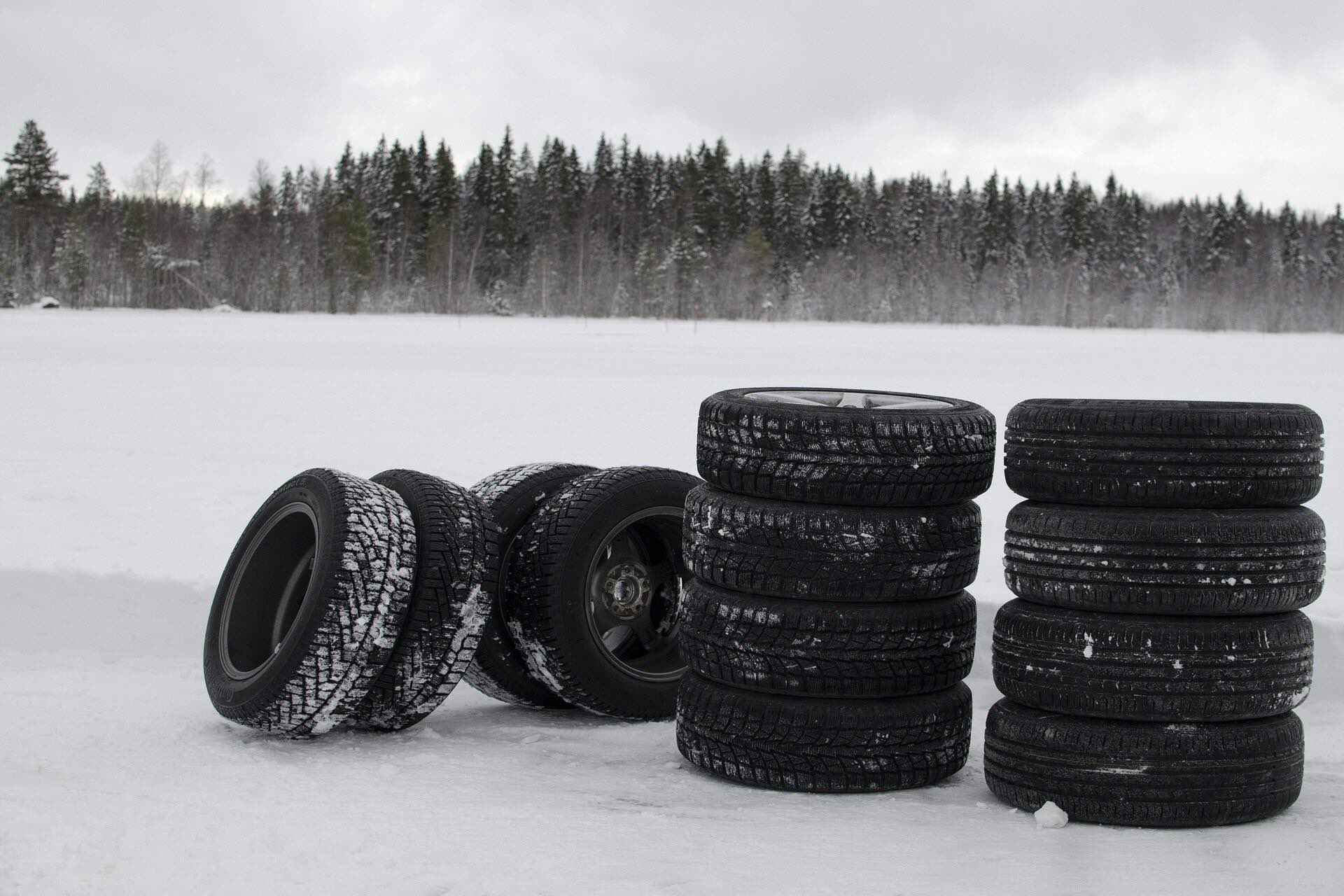

Articles
How To Store A Truck Cap Outside
Modified: May 6, 2024
Learn the best techniques for storing a truck cap outside and keeping it in top condition with these informative articles.
(Many of the links in this article redirect to a specific reviewed product. Your purchase of these products through affiliate links helps to generate commission for Storables.com, at no extra cost. Learn more)
Introduction
Truck caps are valuable accessories for truck owners, providing additional storage space and protection for their belongings. However, there may be instances where you need to store your truck cap outside. Whether it’s due to limited garage space or temporary storage needs, it’s important to take the necessary steps to protect your truck cap during this time. In this article, we will guide you on how to properly store a truck cap outside.
Storing a truck cap outside comes with its challenges. Exposure to the elements such as rain, snow, sunlight, and extreme temperatures can cause damage to the cap’s paint, structure, and seals. Additionally, if not properly secured, the cap may become a target for theft or vandalism. By following the steps outlined in this article, you can minimize the risk of damage and ensure the longevity of your truck cap while it’s stored outside.
Before diving into the storage process, it’s crucial to assess the location where you plan to store your truck cap outside. Look for a spot that offers protection from direct sunlight, heavy rain, and other elements. If possible, choose a covered area like a carport, shed, or canopy. If no covered area is available, consider investing in a truck cap cover or a tarp to provide an extra layer of protection.
Key Takeaways:
- Properly assess the storage location for your truck cap outside, ensuring protection from the elements, accessibility, and security to minimize potential damage and theft.
- Regular maintenance, proper cleaning, and securing the truck cap are essential for its longevity and protection while stored outside. Stay vigilant and address any issues promptly to ensure optimal condition.
Read more: How To Store Caps
Assessing the Location
Before storing your truck cap outside, it’s important to assess the location and ensure it provides suitable conditions for storage. Here are a few factors to consider:
- Protection from the elements: Look for a spot that offers some form of protection from direct sunlight, heavy rain, and harsh winds. Exposure to extreme weather conditions can cause damage to the truck cap over time. If possible, choose a location that offers natural shelter, such as under a tree or beside a building.
- Elevation and drainage: Ensure that the chosen location is elevated and allows for proper drainage. Storing the truck cap in an area prone to flooding or standing water can lead to moisture getting trapped inside the cap, causing mold, mildew, or rust.
- Accessibility: Consider how easily you can access the stored truck cap. It should be convenient for you to remove or reinstall it when needed. Avoid storing it in areas that are obstructed or have limited space for maneuvering.
- Security: Take into account the security of the location. If possible, choose a spot that is visible from the main road or well-lit at night. This will help deter theft or vandalism and provide peace of mind.
Once you have assessed the location and ensured it meets the above criteria, you can proceed with the next steps for storing your truck cap outside.
Cleaning and Preparing the Truck Cap
Before storing your truck cap outside, it’s important to give it a thorough cleaning and prepare it for storage. Here are the steps to follow:
- Clean the cap: Start by washing the truck cap using a mild detergent and water. Use a soft cloth or sponge to gently scrub away any dirt, dust, or grime. Pay attention to the seams and corners where debris can accumulate. Rinse the cap thoroughly and allow it to dry completely.
- Inspect for damages: While cleaning, take the opportunity to closely inspect the truck cap for any damages such as cracks, dents, or loose seals. Address any issues or repairs before storing the cap outside. This will help prevent further damage during storage and ensure the cap’s integrity.
- Apply a protective layer: Consider applying a protective wax or sealant to the truck cap. This will provide an extra layer of protection against the elements. Follow the manufacturer’s instructions for the specific product you choose, and make sure to evenly apply the protective layer on all surfaces of the cap.
- Remove any accessories: If your truck cap has any removable accessories such as racks or light bars, remove them before storage. These accessories can be stored separately or in a secure area to prevent damage or loss.
- Close and secure all openings: Ensure that all openings, such as doors or windows, are securely closed. This will prevent moisture, pests, or debris from entering the cap during storage.
By following these steps, you can ensure that your truck cap is clean, protected, and ready for storage outside. Taking the time to properly prepare the cap will help maintain its condition and extend its lifespan.
Covering and Protecting the Truck Cap
When storing your truck cap outside, it’s crucial to protect it from the elements by using proper covers and taking necessary precautions. Here are the steps to cover and protect your truck cap:
- Truck cap cover: Invest in a high-quality truck cap cover specifically designed to provide protection against weather conditions. Look for a cover that is made of durable and waterproof material to shield the cap from rain, snow, and UV rays. Ensure that the cover fits properly and securely on the cap.
- Tarp as an alternative: If a truck cap cover is not available, you can use a heavy-duty tarp as an alternative. Choose a tarp that is large enough to completely cover the cap, and make sure it is tightly secured to prevent it from blowing off.
- Padding for support: Place some padding beneath the truck cap cover or tarp to provide additional protection against impact and scratches. Soft materials like old blankets, foam, or bubble wrap work well as padding and help minimize any potential damage during storage.
- Avoid moisture build-up: To prevent moisture build-up inside the truck cap, consider using desiccant packs or moisture absorbers. These can help absorb excess moisture and prevent the growth of mold or mildew. Just make sure to replace them regularly to maintain their effectiveness.
- Secure the cover: Ensure that the truck cap cover or tarp is securely attached and tightly fastened. Use bungee cords, straps, or ropes to secure the cover and prevent it from being blown away by strong winds. Regularly check the cover to ensure it remains in place and make adjustments as needed.
- Periodically remove the cover: While the truck cap cover provides protection, it’s important to periodically remove it and inspect the cap. This allows you to check for any signs of damage, moisture, or pests. It also gives the cap a chance to breathe and prevents any trapped moisture from causing harm.
By following these steps, you can effectively cover and protect your truck cap from the elements, ensuring its longevity and minimizing potential damage during storage outside.
To store a truck cap outside, use a waterproof cover to protect it from the elements. Make sure the cover is secure to prevent wind damage. Additionally, regularly clean and wax the cap to maintain its condition.
Securing the Truck Cap
When storing your truck cap outside, it’s essential to take measures to secure it properly. This will help prevent theft, unauthorized access, and potential damage. Follow these steps to secure your truck cap:
- Locking mechanisms: Ensure that your truck cap is equipped with a sturdy and reliable locking mechanism. Most truck caps come with built-in locks, but if yours doesn’t have one, consider investing in an aftermarket locking system. This will help prevent unauthorized access and deter theft.
- Secure attachment: Make sure that the truck cap is securely attached to your truck bed. Double-check that all mounting points, such as clamps or bolts, are tight and properly fastened. This will prevent the cap from shifting or being dislodged during strong winds or attempts to remove it.
- Additional security devices: Consider using additional security devices to further protect your truck cap. This could include installing a security alarm system or a GPS tracking device specifically designed for truck caps. These devices can provide an extra layer of security and help you locate your cap in case of theft.
- Well-lit area: If possible, store your truck cap in a well-lit area. Adequate lighting can deter potential thieves and make it harder for them to tamper with or remove the cap without being noticed. Motion-sensor lights are particularly effective in deterring unwanted attention.
- Neighborhood watch: Get to know your neighbors and inform them about your stored truck cap. A vigilant and engaged community can help keep an eye out for any suspicious activities or individuals around your property. Mutual trust and cooperation can go a long way in ensuring the security of your truck cap.
- Regular checks: Periodically inspect the truck cap and its surroundings for any signs of tampering or damage. Regular checks will help you identify any security issues early on and take the necessary steps to address them promptly.
By following these steps to secure your truck cap, you can have peace of mind knowing that it is well-protected and less susceptible to theft or damage during its storage outside.
Read more: How To Store Toy Trucks
Regular Maintenance and Inspection
Regular maintenance and inspection are key to ensuring the longevity and proper functioning of your truck cap while it is stored outside. Follow these guidelines to keep your truck cap in optimal condition:
- Clean and inspect: Regularly clean your truck cap to remove dirt, dust, and debris that may accumulate over time. Use a mild detergent and water, and thoroughly rinse and dry the cap. While cleaning, closely inspect the cap for any signs of damage or wear. Address any issues promptly to prevent further damage.
- Check for leaks: Inspect the truck cap for any signs of leaks after heavy rain or snowfall. Look for water stains or dampness inside the cap. If you find any leaks, identify the source and take necessary steps to seal and repair it.
- Ensure proper ventilation: Make sure there is adequate ventilation inside the truck cap. Moisture can build up in enclosed spaces, leading to the growth of mold and mildew. Open windows or vents periodically to allow fresh air circulation and prevent any dampness or odor.
- Tighten bolts and clamps: Regularly check and tighten any bolts, clamps, or other fastening mechanisms that secure the truck cap to your truck bed. Over time, vibrations and movements can cause these parts to loosen. Ensuring a secure attachment will prevent the cap from shifting or becoming dislodged.
- Inspect seals and gaskets: Check the seals and gaskets around the truck cap for any signs of wear or damage. Replace any worn-out or cracked seals to maintain a watertight seal and prevent leaks.
- Inspect for pests: Keep an eye out for any signs of pests or critters that may try to make a home inside your stored truck cap. Look for droppings, chewed materials, or other indicators. If you notice any pest infestation, take appropriate measures to address the issue and prevent further damage.
- Keep it covered: Continuously ensure that the truck cap remains covered when not in use. A secure and properly fitted cover or tarp will protect the cap from dust, debris, and harmful UV rays. Regularly check the cover for any signs of wear or damage and replace it if necessary.
By incorporating regular maintenance and inspection into your routine, you can identify and address any issues with your truck cap promptly. This will help prolong its lifespan and keep it in optimal condition while stored outside.
Conclusion
Storing a truck cap outside requires careful consideration and proper precautions to ensure its protection and longevity. By following the steps outlined in this article, you can effectively store your truck cap outside while minimizing the risk of damage and theft.
Start by assessing the location where you plan to store the truck cap. Look for a spot that offers protection from the elements and provides adequate security. Clean and prepare the truck cap before storage, inspecting for any damages and applying a protective layer, if necessary.
When it comes to covering and protecting the truck cap, invest in a quality truck cap cover or use a heavy-duty tarp as an alternative. Ensure that the cover is securely attached and periodically remove it for inspection and ventilation.
Securing the truck cap is essential to prevent theft and damage. Use locking mechanisms, secure attachments, and consider additional security devices if needed. Choose a well-lit storage area and engage with your community to enhance security measures.
Regular maintenance and inspection are crucial for the proper maintenance of your truck cap. Clean it regularly, check for leaks, ensure proper ventilation, and tighten bolts and clamps. Inspect seals and gaskets, and be vigilant for signs of pests or critters.
In conclusion, by following these guidelines for storing a truck cap outside, you can protect your valuable accessory from the elements, maintain its condition, and extend its lifespan. Remember to regularly check on the cap and address any issues promptly to ensure it remains in optimal condition. With proper care, your truck cap will continue to serve you well for years to come.
Now that you've mastered storing truck caps outdoors, why not spruce up your outdoor space even further? If you're keen on keeping gardening tools and supplies tidy yet accessible, our next read on potting benches with storage will be right up your alley. These clever solutions not only boost outdoor organization but also add charm and efficiency to any garden setup. Don't miss out on these creative ideas that make gardening more enjoyable and streamlined.
Frequently Asked Questions about How To Store A Truck Cap Outside
Was this page helpful?
At Storables.com, we guarantee accurate and reliable information. Our content, validated by Expert Board Contributors, is crafted following stringent Editorial Policies. We're committed to providing you with well-researched, expert-backed insights for all your informational needs.















0 thoughts on “How To Store A Truck Cap Outside”